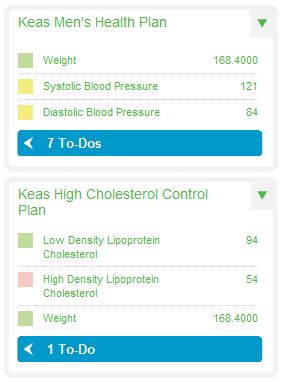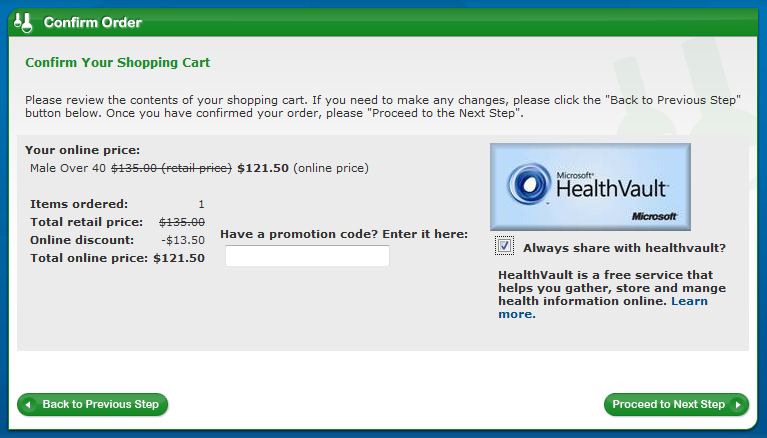MyMedLab + Keas + HealthVault = Awesome
Once in awhile I get a glimpse of what healthcare is going to look like in a few years - and it is super-awesome. That happened the other day -- I got to experience what happens when you take two really great consumer health ideas and loosely couple them through HealthVault.
MyMedLab
First of the pair: MyMedLab. I first learned about these guys late last year when they presented at Health 2.0. What MML does seems pretty simple: they let you order and pay for your own laboratory tests. You pick the tests you want, give them a credit card, go to a local Labcorp collection facility, give up the blood or other samples, and within a day or so --- you get the results. And to boot, they have done a fantastic HealthVault integration using our "dropoff / pickup" model. Just by checking a box during the checkout process, you can have your results available for use in other HealthVault applications.
The experience is phenomenal - especially when you compare it to the typical pattern. Try to get an appointment, sit forever in the waiting room, see the doctor for ten minutes and have her write the lab order, go in for collection, wait for the results to get to your doctor, then to the nurse, then play phone tag with the office as they try to catch you in person to give you the results. Cray-zee.
But wait, don't you need a doctor to decide which tests you need to get? Well sure, sometimes things are complicated. But much of the time they are not. I wonder if I have high cholesterol, or should be thinking about diabetes, or perhaps wonder if the fatigue I'm feeling is a thyroid issue (well ok, pretty sure it's not the menopause thing in my case). What I need is the test - and there is no reason for a doctor to gate my access to it.
Keas
Interpretation - or rather understanding the implications of the results - that's another matter and it is important. This is where the second of the pair shines: Keas, the new brainchild of Adam Bosworth. Keas is still in limited beta, but I got excited enough that I asked for Adam's OK to talk about it here.
Keas is about care plans - capturing clinical expertise in personalized "rule sets" that can help guide individuals along their journey to manage chronic conditions, stay healthy and fit, lose weight, pretty much anything. The core drivers behind these rule sets are laboratory values and measurements, and guess what, they've connected to HealthVault as well - so my MyMedLab test results flow right into the application.
With that data, I can immediately see a ton of information to help me understand my results and put them into context. For example, my HDL cholesterol is normal --- not optimal, but not a matter for significant concern either.

Creating plans like this is a big task across a bunch of dimensions. We know because we're doing similar work with the Mayo Clinic as part of the Mayo Clinic Health Manager - most clinical "best practices" have never been codified to the level necessary to really be computable and capture all of the subtleties that make the difference between solid recommendations and useless platitudes. Adam talks about this as the "recalc engine for health" --- he and his team are great folks to build it.
Better Together!
At the end of the day --- the key thing to realize here is that MyMedLab and Keas know nothing about each other. One is focused on making it easy to get lab results, and the other is focused on turning lab results into valuable information and recommendations. But because they both talk to HealthVault, they link together without doing any extra work - and the combination of both is far better than either alone.
This is what we mean when we talk about the power of an open ecosystem, folks!
Comments
- Anonymous
September 08, 2009
Hi Sean, Nice post on making data actionable. I certainly knew about the work HV's with Health Manager and the capabilities it provides, but did not realize that Keas is also on-board - as you said, Adam is keeping a low profile for Keas at this time. This is the clear difference from your run of the mill PHR, let's call them PHR 1.0, which are little more than a file cabinet and the next generation that make the data in that file cabinet actionable. We could call this PHR 2.0, but honestly, I think we need a completely different term that breaks from the past and points us in a new direction.

